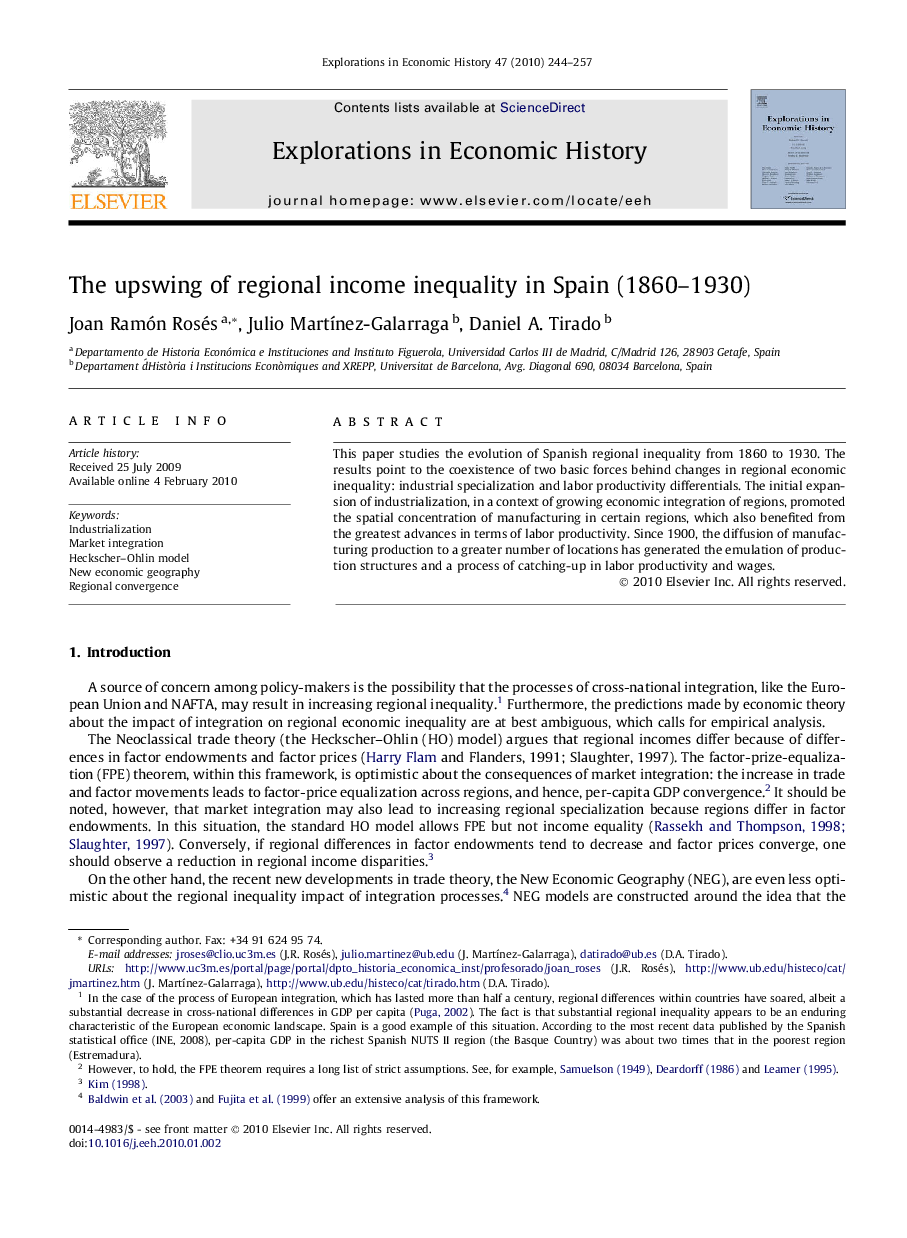| Article ID | Journal | Published Year | Pages | File Type |
|---|---|---|---|---|
| 5068943 | Explorations in Economic History | 2010 | 14 Pages |
Abstract
This paper studies the evolution of Spanish regional inequality from 1860 to 1930. The results point to the coexistence of two basic forces behind changes in regional economic inequality: industrial specialization and labor productivity differentials. The initial expansion of industrialization, in a context of growing economic integration of regions, promoted the spatial concentration of manufacturing in certain regions, which also benefited from the greatest advances in terms of labor productivity. Since 1900, the diffusion of manufacturing production to a greater number of locations has generated the emulation of production structures and a process of catching-up in labor productivity and wages.
Keywords
Related Topics
Social Sciences and Humanities
Arts and Humanities
History
Authors
Joan Ramón Rosés, Julio MartÃnez-Galarraga, Daniel A. Tirado,
